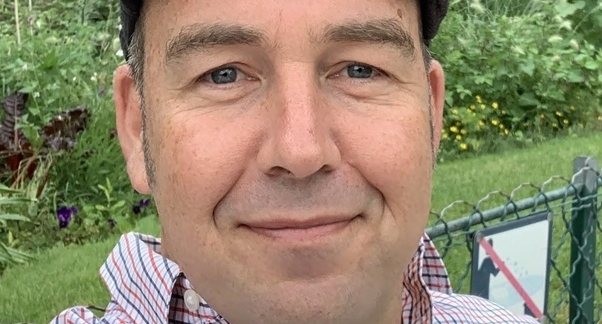‘We expect to deploy 100 airships in 2022’
Having worked with a variety of public sector stakeholders including the governments of several African nations, Cloudline has now also set its sights on the UAE, Israel and the Indian subcontinent outside of Africa.

Having worked with a variety of public sector stakeholders including the governments of several African nations, Cloudline has now also set its sights on the UAE, Israel and the Indian subcontinent outside of Africa. It is slated to deploy 100 airships in 2022 and is looking tackling at four core use cases including health logistics, precision agriculture, infrastructure monitoring, and wildlife management. Yaniv Gelnik, chief revenue officer, Cloudline Dynamics, talks to Lakshmi Ajay in an exclusive.
What are some of the specific problems that drones could solve in Africa?
Drones can offer a variety of options to health logisticians, customized for the particular problem being solved. For example, if blood is in low supply and the cold chain is unreliable, there is a benefit to centralizing the inventory and sending it “just in time” as Zipline has demonstrated in Rwanda and Ghana. If the challenge is the infrequency of non-emergency deliveries, or the inability to send samples back to a lab, airships offer a price-friendly solution. If you are seeking to deliver a pharmaceutical product to someone’s backyard or balcony, Flytrex has a solution. One must consider which UAV platform is optimal on an SKU by SKU basis, taking weight, cold chain requirements, cost, demand projections, volumetric size, and other information into account. There is no single platform that solves all the needs.
Which governments and other agencies does Cloudline work within Africa and globally?
Cloudline works with a variety of public sector stakeholders. The Kenya Innovation Authority has invited Cloudline to demonstrate our technology at the Kenya Innovation Week in December. In Ghana, the Ministry of Agriculture is championing our solution, which will reduce the cost of precision agriculture on a per hectare basis by 2 orders of magnitude. In Côte d'Ivoire, Cloudline is working with the NPSP (National Healthy Logistics Unit), to integrate the airships into their award-winning logistics system. The fastest-moving CAA (Civil Aviation Authority) in Africa has got to be Namibia. They are extremely responsive and supportive. This is why Cloudline is happy to have been selected by the Namibia office of UNICEF to conduct BVLOS milk-run missions, delivering and collecting items from 5 very remote facilities on a daily basis. We are going through similar regulatory reviews in South Africa, Kenya, Ghana, and Côte D'Ivoire, as well as UAE, Israel, India, Sri Lanka, Malaysia, and the Philippines outside of Africa.
Could you specify which are the kind of drones, airships, or models being used by Cloudline for humanitarian logistics?
Cloudline uses lighter-than-air airships that leverage the lifting capacity of helium, solar power from the sun, and advanced robotics engineering to offer a fully autonomous health logistics aircraft with a payload of 50 kg under active cooling, capable of traveling hundreds of km away for $0.02/km/kg. The wingspan is 5.5m and the length is 14.5m. The envelope not only offers high visibility, reducing the risk of an in-air collision but also serves as a “pre-deployed airbag” in the rare case of an emergency. The airship cruises at 50 km/h, but can fly as fast as 75 km/h.

Cloudline uses lighter-than-air airships that leverage the lifting capacity of helium, solar power from the sun, and advanced robotics engineering
What other use cases have been identified that can be fulfilled by the airship? How many total airships do you plan to deploy by 2022?
Cloudline now focuses on four core use cases including health logistics, precision agriculture, infrastructure monitoring, and wildlife management. We have also been approached for a variety of security, tree seeding, data transmission, and entertainment use cases as well, but we are waiting for our team to grow before expanding to those customers. We expect to deploy 100 airships in 2022.
Could these airships help/aid during any natural calamity, if so have you tested them?
Yes, we have worked with a number of emergency response units around the world, as well as FEMA Prime Contractors to develop this use case. In case of a natural disaster, the airships can be flown directly to the site as checked luggage, and can immediately be deployed for logistics, data continuity, and live video feed applications.
What is the current cost of deploying the airship for usage in plying humanitarian logistics and for which use cases?
Every use case is different, but in general, we are achieving last-mile delivery costs of $0.02/kg/km and agriculture scanning costs of $1/hectare (compared to current market rates of $30-$60).
What can government agencies and other stakeholders do to accelerate the process of creating a great drone ecosystem in Africa? Are there any governments that have come up with good policies or frameworks?
Government agencies need to name innovation leads in each department to serve as a single point of contact for those proposing new technologies. We have seen this work in multiple countries and agencies, as often we find those in traditional logistics roles are more reluctant to evolve their operations. On the regulatory side, we appreciate that each government must take its time to develop airspace integration policies, and most countries have made great progress on this front. However, the lack of responsiveness at CAAs across Africa remains a challenge. As noted, Namibia really stands out in this regard, so does Côte d'Ivoire.
What is your one big ask from regulators or policymakers to ease operations in the region?
Set clearer expectations around approval processes and response times. That way, even if the unit is overburdened, or the policies are slow to be approved, people have correct expectations and can plan accordingly.
This interview was originally published in Logistics Update Africa' November - December 2021 issue.


